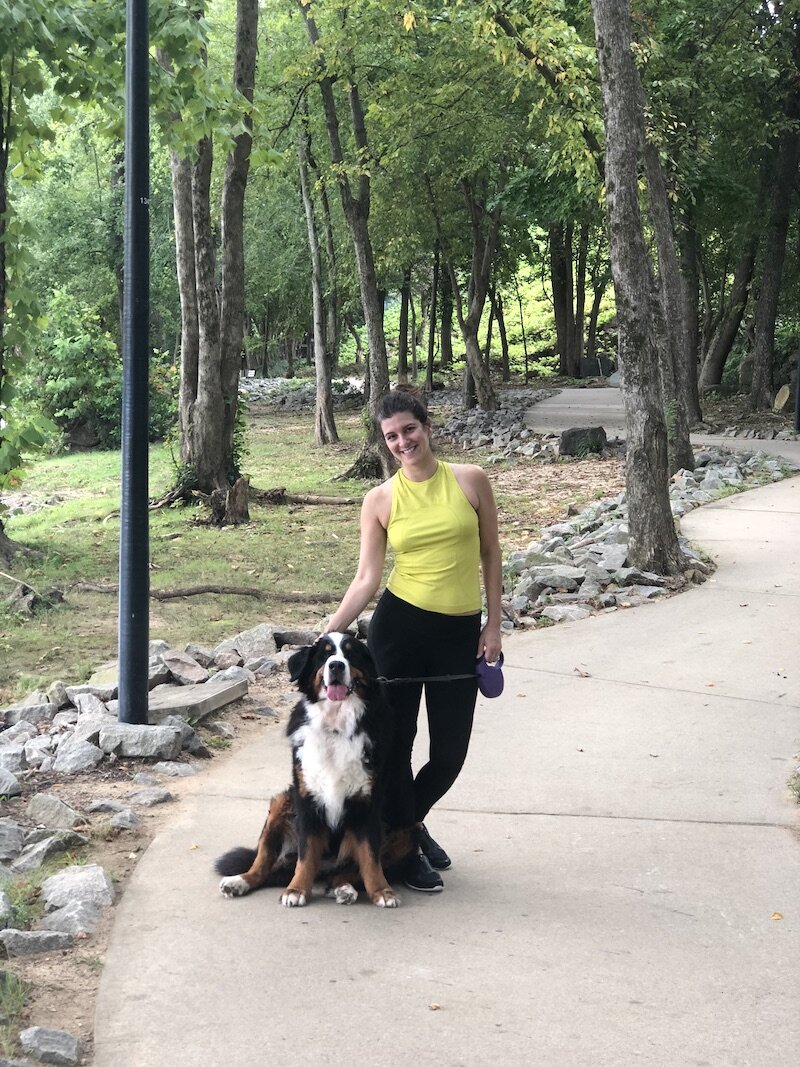Movement vs. Exercise: How to Be More Active Without Feeling Miserable
Are you someone who hates to workout? Try my simple trick of reframing movement vs. exercise to learn how to be more active without feeling miserable! It’s a simple trick to help nurture a healthier relationship with and habits around physical activity.
I've always been a bit envious of natural athletes. You know, those people who can run marathons or do triathlons or tolerate crossfit. People like my husband, who excel at every sport they try. The ones who run towards the ball with the intention of catching it, instead of slowly jogging towards the ball to look like they’re putting in an effort, the whole time praying that someone else gets there first. Not that I do that or anything.
Me, I’ve never been athletic. As a child, I was never good at sports, and as a result, hated them. Whatever recess activity we were playing, I was always the very last kid to be picked for the team. Once I was on a co-ed soccer team, which I’m not totally sure why I signed up for (probably my parents trying to get rid of me for a few hours), and I literally didn’t even know the rules. I honestly didn’t know if I was supposed to try and kick the ball into the net guarded by my teammate or the other team and I was too embarrassed to ask. Thankfully, no one on my team ever kicked the ball to me so I never had to figure that one out. While there were some activities I enjoyed, like riding horses and rollerblading, for the most part, I was pretty content to play Donkey Kong on Super Nintendo or read a book in my room.
So as I got older and tried to get into exercise, it never really stuck. As someone who didn’t play sports growing up, the physical feeling of being out of breath or a pounding chest wasn’t associated with fun times with my friends - it was associated with trying not to look like a loser in front of the cool kids.
To me, exercise was a chore. It was a thing I had to do to be “healthy” - and of course my definition of healthy at the time was very much centered around staying thin. I tried to go to the gym and would willpower my way through a few sessions, then wouldn’t go again for a month. I’d try to run, but stop after a few minutes as soon as I started to feel uncomfortable. It also proooobably didn’t help that with our “no pain, no gain” cultural concept of exercise, I would set totally realistic goals like going from sedentary to working out five days a week.
Despite all this, today, I consider myself to be someone who mostly enjoys physical activity, and someone who is able to be relatively active without feeling miserable about it. While certainly there are types of movement I don’t really enjoy (hello Crossfit), and times that I don’t really feel like being active (a good 3-4 months straight last year), for the most part, I feel happy with my relationship with, and habits around physical activity.
Hiking is probably my favorite kind of movement. This hike in New Mexico was one of the coolest we’ve done.
Movement vs. Exercise
So, how did I learn to be more active without totally hating it? For me, it was a mindset shift in thinking about movement vs. exercise.
While words have different associations for different people, to me, exercise sounds like something you force yourself to do - a chore to cross off the list. It usually implies formal movement, done at the gym or a studio, usually with the goal of burning calories, toning muscles, or promoting some vague idea of health (usually one that’s pretty wrapped up in body size). I often think of it being used in a punishing way, to compensate for having eaten something “bad,” or to earn a desired food.
Movement, on the other hand, refers to any way you move your body, not just movement done as part of formal exercise. In intuitive eating, there’s a focus on joyful movement (i.e. movement for pleasure) and being intuitive with movement (i.e.applying principles of intuitive eating to movement, by tuning in to what feels good for your body). While it certainly can include movement that’s done in a formal or gym setting, movement is more inclusive, and could also include things like hiking, gardening, stretching for a few minutes between classes/meetings, walking the dog, riding the bike to a friends house, physical therapy exercises, or cleaning the house. Because, when it comes to physical and mental health, all movement counts. Your body doesn’t know whether you’re in a gym or not, wearing fancy lululemon workout clothes or not - it just knows you’re moving.
I ran my last half-marathon a few years ago. I didn’t train as much as I could have, because I wasn’t really feeling training at the time, so we took a pretty leisurely pace and I stopped to walk quite a few times. Without expectations about how fast I “should” run, we had a really fun time!
How I Learned to Be More Active Without Feeling Miserable
Shifting my mindset helped me to movement vs. exercise helped me create space for physical activities I actually enjoyed. Around that time I discovered yoga, which I had previously overlooked because I thought of it as" “just stretching.” When I didn’t feel so pressured to workout, I was able to notice cravings for movement, and honor those cravings with more outdoors activities, like hiking, walking at the riverfront or around the neighborhood, and kayaking. I even got into running! When I dropped the expectations that I was “supposed” to be able to run a certain amount of time or length without stopping and just ran and walked as I felt like, I discovered I actually kind of liked it. While I’ve been less into running as of late, at one point, I even got up to running a few half-marathons, two of which I did without stopping - kinda cool coming from the gal who stopped after running a couple of blocks!
Of course, this was my experience, and that’s not reflective of everyone’s experience, nor is increasing physical activity the “right” outcome of reframing exercise to movement. For many people, a more intuitive and healthy relationship with movement actually means being less active.
Also, it wasn’t an overnight shift. I had a pretty nice break from all movement before it was something I found myself craving again. For many of my clients, a big part of healing their relationship with movement is taking a break from it for a little or sometimes a long while. That can feel stressful, but remember, while physical activity and fitness is part of health, it is by no means all of health, and the only reason it is put up on a pedestal is because it gets linked with weight.
Walking the pups is my favorite way to get movement in during the day. Unfortunately, since we said goodbye to Savannah, Charlie can’t make it quite so far because of his neuropathy, so I’ve been finding other reasons to walk around the neighborhood, like listening to a training webinar.
Movement During a Pandemic
Lately I’ve been hearing a lot of stress from my clients, who are seeing other people’s workouts during quarantine, and feeling a lot of pressure around expectations of what they should be doing for exercise. Also, with gyms and studios closed, many people are feeling anxious about not having access to their usual activities for exercise. It’s really tough, because while movement is by no means something that should be an obligation, at a time when so many of our usual coping tools are unavailable, and when many of us are feeling pretty cooped up, joyful movement is a really helpful coping skill. My hope in sharing this movement vs. exercise post is that it helps free yourself up expectations, so you’re able to nurture a relationship with movement that feels good for you, whatever that looks like. If you’re feeling the weight of these exercise expectations, I hope that you’re able to take a step back and broaden your lens around movement.
If you enjoyed this blog post on movement vs. exercise, follow my joyful movement Pinterest board.
This post on movement vs. exercise was originally published August 2015. It has been updated to give you the best possible content.









